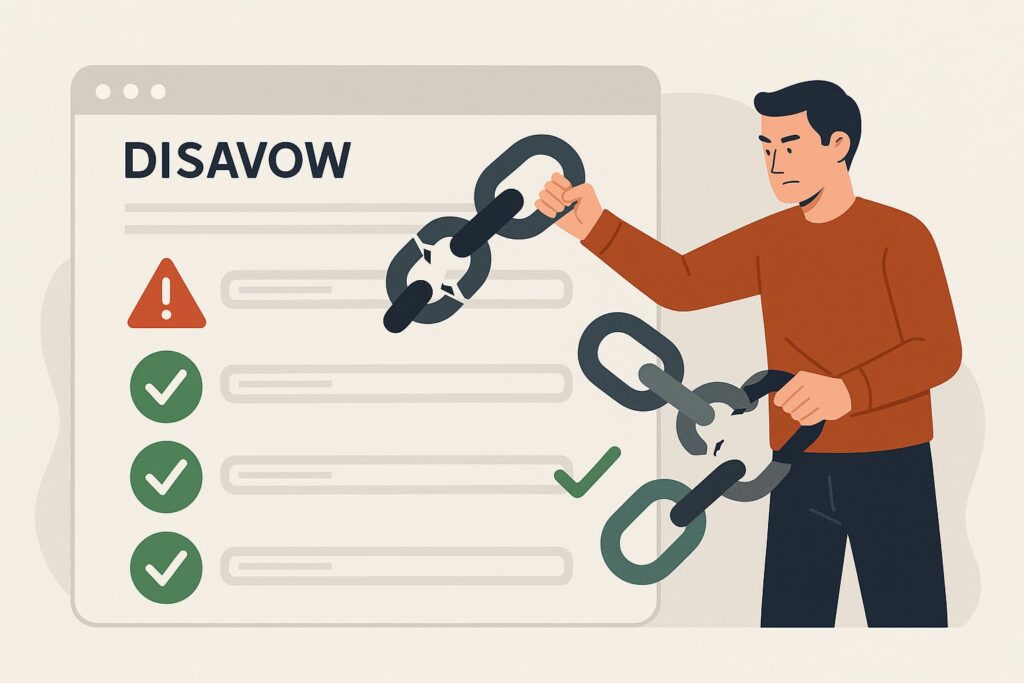To outrank competitors in search results, you must evaluate your backlink profile on a regular basis, in addition to having content and links. Without audits, toxic links, damaged pages, and over-optimized anchors can harm your ranks while boosting rivals’.
A thorough link audit identifies bad connections, restores lost value, increases anchor variety, and reveals missing possibilities. Most significantly, it keeps your backlink strategy stronger than your competitors, assuring your site’s visibility and authority.
Why Link Audits Matter for Competitive SEO
Backlinks remain one of the most important ranking factors in search engine optimization. Quality links show search engines that a site is credible and relevant, while low-quality or spammy links can damage rankings.
A link audit is a structured process for reviewing your backlink profile. It identifies harmful links, finds missed opportunities, and improves your overall link strategy. Most importantly, it helps keep your backlink profile stronger and more effective than your competitors’.
Without regular audits, you risk:
- Search engine penalties from toxic links;
- Ranking drops due to broken or low-quality backlinks;
- Losing traffic to competitors with stronger link profiles.
Regular expert audits allow you to correct issues, identify gaps, and strengthen your position in search results.
Identifying Weaknesses in Your Link Profile
You can’t outrank competitors until you take a hard look at your own backlink profile. A neglected or spammy link profile doesn’t just hold you back—it actively gives competitors an edge. The first step to stronger SEO? Identifying and fixing these vulnerabilities.
The Hidden Threat of Toxic Backlinks
Not all backlinks are beneficial. Toxic links—from sources like PBNs, spam directories, or unrelated sites—can hurt your rankings. Google can detect these manipulative links and may penalize your site. Even without a penalty, too many bad links weaken the impact of your quality backlinks.
The upside? Tools like Google Search Console, Ahrefs, and Moz can help identify and disavow harmful links before they cause real damage.
The Problem of Broken Backlinks
Broken backlinks quietly weaken your SEO. When other websites point to pages on your site that no longer exist, you miss out on valuable link equity. Worse, competitors may claim those links by offering their own content as a replacement.
To maintain your authority, monitor for broken links and either set up 301 redirects or request updates from the referring sites.
The Risks of Anchor Text Over-Optimization
Another SEO pitfall? Stuffing your backlinks with overly optimized anchor text. Risks include:
- Google penalties – Excessive exact-match keywords (e.g., “best running shoes”) may trigger spam alerts.
- Unnatural link profiles – Over-optimization looks manipulative.
- Loss of organic growth – Google prefers varied anchor text.
How Competitors Exploit These Weaknesses
Competitors quickly take advantage of SEO mistakes. Toxic backlinks can trigger penalties, making it easier for others to outrank you. Broken links? Those are missed chances that others can redirect to their content. Over-optimized anchor text can also backfire, earning you penalties while competitors benefit from more natural link profiles.
The Fix: Run Regular Link Audits
Strong SEO depends on consistent backlink upkeep. Removing toxic links, fixing broken ones, and balancing anchor text helps close gaps and keep competitors from gaining ground. Once your link profile is clean, you can focus on new growth.
Reviewing Competitor Backlinks for SEO Opportunities
Improving SEO means more than watching your own links. Studying competitor backlinks shows which sites link to them, where you’re falling behind, and what opportunities you’re missing. This helps refine your strategy and build better, more relevant links.
Essential Tools for Competitor Backlink Analysis
Several tools can provide deep insights into your competitors’ backlink profiles:
- Ahrefs/SEMrush: Track competitors’ backlinks—referring domains, anchor text, growth, domain authority, and traffic potential.
- Majestic: Focuses on link quality with Trust Flow & Citation Flow metrics.
- Google Search Console: Limited to your site but useful for manual cross-checks.
- SpyFu: Reveals historical backlink growth trends.
Critical Insights to Uncover Through Competitor Analysis
When studying competitors’ backlinks, prioritize these critical areas:
- Authority Gaps – Find top sites linking to them but not to you.
- Broken Links – Replace their dead links with your pages.
- Anchor Text – Review their anchor usage to refine yours.
- New Tactics – Spot link methods you’re not using yet.
- Niche Gaps – Identify industry or local links they dominate.
Turning Audit Insights into Action

It’s time to take strategic action when you’ve examined your competition and audited your links:
1. Disavow Harmful Links
Some backlinks might really harm your SEO, so not all of them are beneficial. Poor quality connections from dubious private blog networks (PBNs), link farms, or spamming directories can hurt your results and could lead to Google penalties. Use Google’s Disavow Tool to remove these dangerous connections from your website in order to safeguard it.
Why This Matters:
- Avoid Penalties – Disavow harmful links to reduce risk.
- Boost Trust – Removing bad links improves authority.
- Save Crawl Budget – Helps Google prioritize valuable pages.
Pro Tip: Before disavowing, attempt to contact the linking site for removal first—this is a cleaner solution. Only use the Disavow Tool as a last resort.
2. Reclaim Broken Links
When other sites link to pages you’ve deleted, that valuable link equity vanishes—wasting a golden opportunity. To fix this, use tools like Ahrefs to track down broken backlinks, then contact webmasters and ask them to update the links to your current content. And for pages that are gone but have similar replacements? Set up 301 redirects to keep that SEO value working for you.
Beyond rankings, fixing broken links improves user experience. Dead ends frustrate visitors and damage trust, potentially costing you conversions. Each restored link boosts your site’s authority while creating a smoother journey for users. It’s a simple fix with compound benefits for both search engines and human visitors.
3. Target Competitor Link Sources
If you know how to use them, the backlinks from competitors are a treasure trove for your SEO strategy. These links demonstrate that related websites are already considering your material. Your objective? Persuade them to link to you rather than (or in addition to) your rivals.
Start by looking for websites that link to your competitors but not to you using tools like SEMrush, Moz, or Ahrefs. Next, rank the prospects according to their relevance and domain authority; start with highly authoritative websites in your area.
But simply asking for links won’t cut it. You need to give websites a compelling reason to choose your content. That might mean:
- Creating more in-depth resources;
- Offering exclusive data or insights;
- Proposing win-win collaborations;
- Highlighting what makes your product or service unique.
When a competitor provides you with a high-quality backlink, it lowers their authority and raises yours. This is a calculated approach to raise your rating in the web rankings for your sector; it goes beyond simple link-building.
4. Optimize Anchor Text & Link Diversity
Google values genuine, diverse link profiles. Over-optimized anchor text (exact-match keywords) or reliance on a single link type might be considered red flags.
Best Practices:
- Mix Anchors – Use branded, natural, and limited keyword-rich text.
- Vary Sources – Include editorials, guest posts, and brand mentions.
- Avoid Spam – Don’t overuse exact-match or shady link tactics.
Natural link profiles rank better because Google rewards organic-looking backlinks that appear earned rather than manipulated. A diverse mix of anchor texts and referring domains signals authenticity to search algorithms.
More importantly, this diversity protects you from penalties. Over-optimized profiles with too many exact-match anchors can trigger spam filters, while varied links create a sustainable strategy that withstands algorithm updates. The result? Stable rankings and long-term growth without penalty risks.
Maintaining the Edge with Ongoing Audits

Expert link audits are your secret weapon for dominating search rankings. They do three crucial things: expose weak spots in your backlinks, pinpoint lost or toxic links, and reveal gaps where competitors are beating you. A proper audit keeps your site sharp, competitive, and consistently authoritative in your space.
Set a Regular Audit Routine
For active campaigns, monthly audits can catch rapid changes. Stable sites can stick to quarterly checkups. Either way, having a consistent schedule helps prevent SEO penalties and keeps your profile clean.
Track Competitor Moves
Audits shouldn’t stop at your site. Monitoring competitors’ backlinks can uncover valuable link sources you haven’t used. If their rankings rise, reviewing their content and linking patterns can help you close the gap.
Use Automation for Speed
Tools like Ahrefs and Screaming Frog take the grunt work out of SEO audits. They automatically flag broken links, track new backlinks, and spot technical problems – giving you a chance to fix issues before they ever impact your search rankings.
Why waste hours manually checking when these tools can do the heavy lifting for you?
Rely on Proven Audit Processes
The value of an audit lies in its depth. A trusted service like 3XE Digital performs comprehensive scans across multiple databases, assesses each link for quality and risk, and analyzes anchor text distribution. Their process also includes competitive gap analysis, toxic link removal, and personalized recommendations—not just reports, but clear next steps to strengthen your SEO.
In competitive search results, audits are essential. Regular, professional evaluations help keep your backlink profile free of harmful links, focused on relevant sources, and consistent with what successful sites are doing.
How Expert Link Audits Provide an Edge
While it’s possible to run basic backlink checks using public SEO tools, expert audits go deeper. They use multiple data sources, understand the risks, and provide clear action steps. Here’s what sets them apart:
1. Deep Backlink Scans
An expert team doesn’t rely on a single SEO tool. They cross-reference data from platforms like Ahrefs, Semrush, Majestic, and Google Search Console. This wide coverage helps capture a more complete list of backlinks.
2. Link Quality Assessment
Each link is evaluated not just for whether it exists but for its value. That includes:
- Domain authority and trustworthiness;
- Relevance to your industry or topic;
- Context of the link (page content, placement);
- Anchor text used;
- Whether the link is followed or nofollowed.
Links that come from irrelevant directories, spun blogs, or low-trust sites are flagged for review or removal.
3. Anchor Text Analysis
SEO professionals carefully examine your anchor text profile to detect any signs that might seem manipulative. An excess of exact-match keywords, irrelevant linking sites, or repeated wording can trigger search engine scrutiny. Refining the variety and context of anchor text helps your link profile appear more organic and minimizes the chance of penalties.
4. Competitor Comparison
Expert audits don’t just look at your site. They also include an analysis of how competitors are building links. This helps identify:
- High-value sites that link to competitors but not you;
- Industry directories or forums that others are using;
- Guest post opportunities;
- PR mentions or digital campaigns that attracted links.
By spotting these gaps, you can target similar sources and close the link equity gap.
Conclusion
Regular expert link audits help keep your SEO on track. They catch toxic links, fix broken backlinks, and improve anchor text use. Competitor analysis also reveals new backlink opportunities. Staying consistent with audits and using the right tools keeps your site visible, trusted, and competitive in search results.
